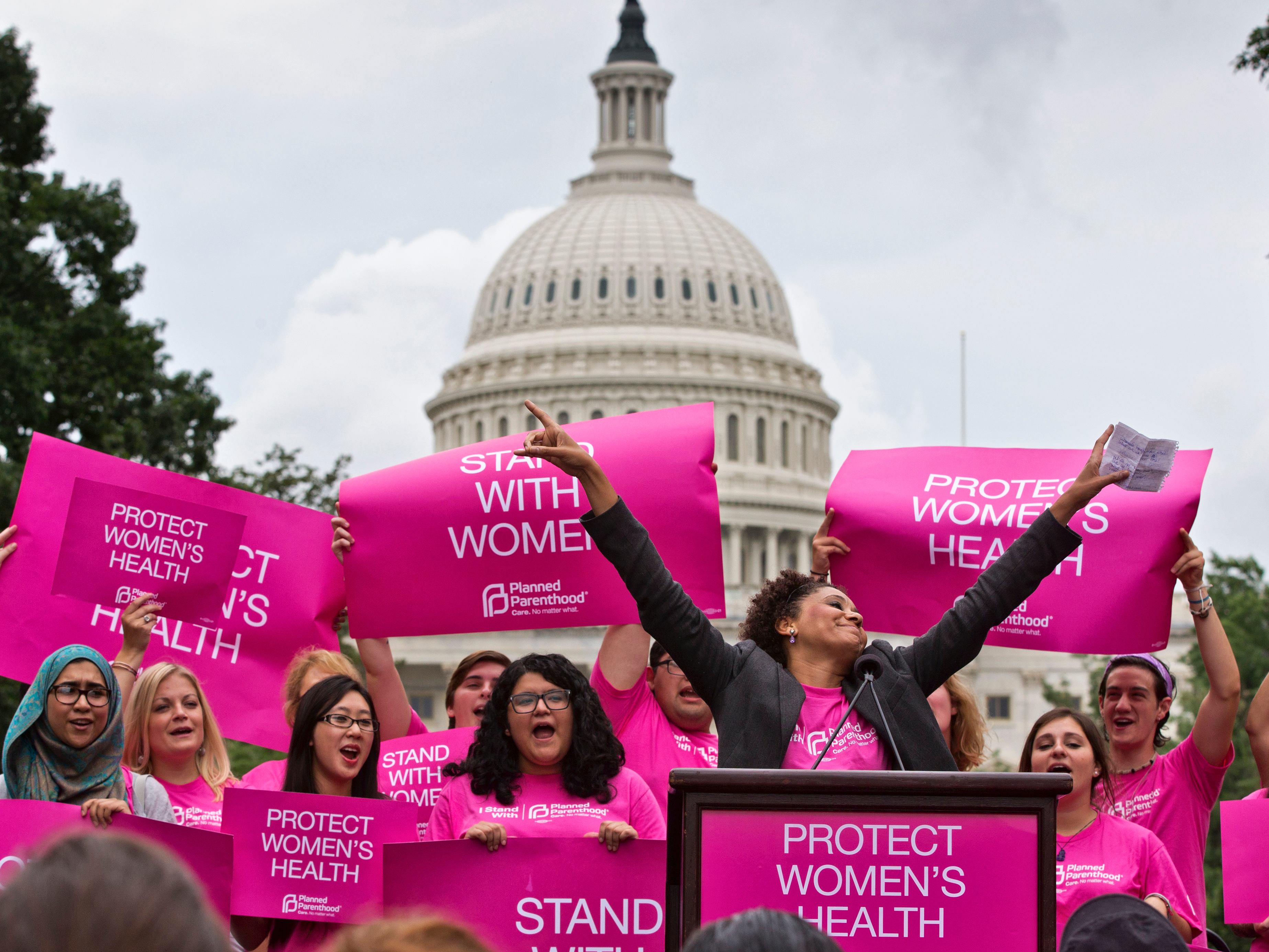While Planned Parenthood has become the go-to poster child for the abortion debate in the US over the past year, the organization has weathered political turmoil for the last 101 years.
In 1916, three women in New York were arrested for handing out birth control information and, after going to court, opened the first branch of what is now Planned Parenthood today.
Even though abortions are just one of many services offered at the nonprofit’s health centers, Planned Parenthood has often caught ire from antiabortion activists and conservative politicians.
Here’s how Planned Parenthood went from a small group of women’s rights activists in a Brooklyn brownstone to one of the largest reproductive healthcare providers in the world today:
In 1916, early women's rights activists Margaret Sanger, Ethyl Byrne, and Fania Mindell were thrown in jail for 30 days for handing out birth control and pregnancy information from a Brooklyn brownstone.

Source: Planned Parenthood
Back then, obscenity laws made it illegal for anyone — even doctors — to distribute contraception or information on it. The most popular forms of birth control those days were condoms and diaphragms.

Sources: Planned Parenthood, Our Bodies Ourselves
After a lengthy court battle, a district judge in New York struck down the federal law banning contraception, legalizing birth control prescribed by a doctor in 1936. But it would take years for most women to gain access.

Source: Margaret Sanger
In 1921, Sanger opened the American Birth Control League — the first official organization of its kind in the country.

Source: Encyclopedia of Women's History in America
Over the next four decades, Sanger remained at the helm of the organization and tirelessly pushed biologists to develop a birth control pill.

Source: Planned Parenthood
Up until her death in 1966, Sanger would receive hundreds of letters from both married and unmarried women begging her for advice on how to prevent untimely pregnancies. But she wasn't without controversy — many believe she was interested in birth control because she believed in the racially motivated eugenics movement.

Source: The Margaret Sanger Papers Project, NYU
In 1942, the organization was renamed Planned Parenthood, and in 1962, gynecologist Alan Guttmacher took over as president.

In 1960, the first oral contraceptive pill was approved by the FDA. It became widely available throughout North America and, for the first time, gave women unprecedented freedom to control when they chose to start a family.

Source: The New Yorker
While Sanger herself was once opposed to abortion, changing times led the organization to push for abortion reform. They routinely challenged individual state's abortion bans.

Source: The New Yorker and The Chicago Tribune
In 1973, the Supreme Court granted women a constitutional right to abortion in Roe vs. Wade. But Planned Parenthood would keep fighting cases for years to come as states, lawmakers, and other organizations sought to overturn Roe.

New leaders would choose to bring Planned Parenthood in new directions — including opening clinics in other states and countries.

Source: Planned Parenthood
Over the years, Planned Parenthood offered free birth control, reproductive information, pap smears, STI tests, abortion services, counseling, breast exams, and other cancer detection tests to both women and men.

Source: Planned Parenthood
Planned Parenthood has also stayed true to its activist beginnings — often protesting attempts to criminalize abortion in different states and fighting for better access to birth control information for teens.

Source: Planned Parenthood
Throughout its history, Planned Parenthood has also attracted passionate opposition. Antiabortion protesters have gathered outside clinics, blocked providers as they were exiting their cars, snuck into clinics with cameras, and even set fire to some clinics.

Source: NPR
In 2015, a mass shooter killed three people and injured nine outside a Colorado clinic, later saying that he did it as a "warrior to the babies."

Sources: Business Insider and NPR
Various lawmakers and antiabortion activists have also tried to defund Planned Parenthood over the years with state and national laws. The Hyde Amendment made public funding for abortions illegal since Congress passed it in 1977, so most of the efforts end up cutting money for public health programs.

Source: Business Insider
Despite constant efforts to shut down or defund the organization, Planned Parenthood has also attracted well-known supporters, from politicians to celebrities.

Source: Business Insider
After Donald Trump was elected president in November 2016, the fight for Planned Parenthood took on a new edge. He promised to appoint Supreme Court justices to overturn Roe, and to support defunding or antiabortion legislation.

Source: Business Insider
In the weeks after the election, Planned Parenthood received 300,000 donations, a surge 40 times its usual rate in that timeframe. Millions of people showed their support in the Women's March on the day after Trump's inauguration, the largest protest in US history.

Sources: Business Insider, The Guardian, The Atlantic
Today, Planned Parenthood has 350 health centers across the US, serving 2.5 million people a year.


